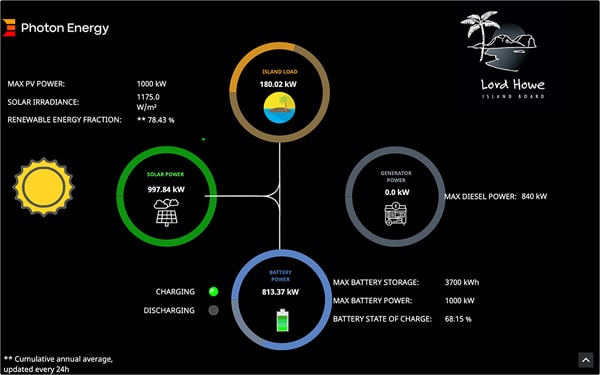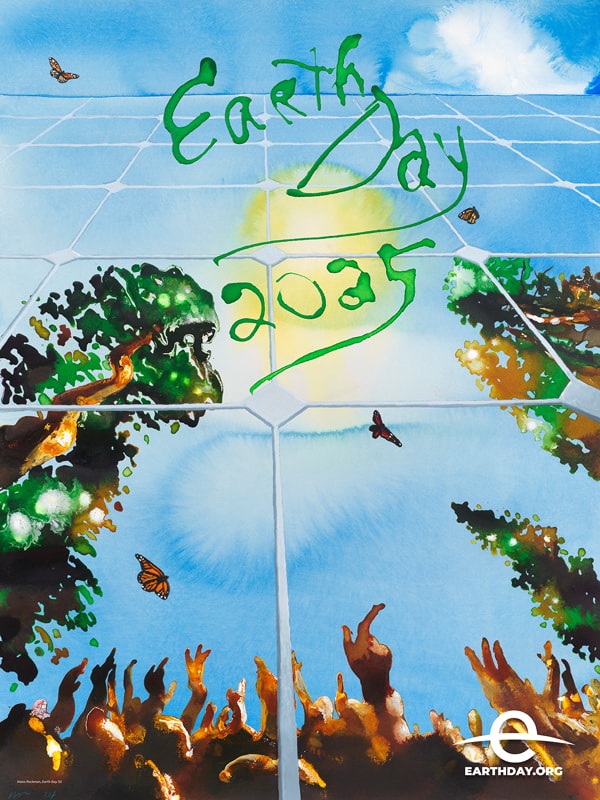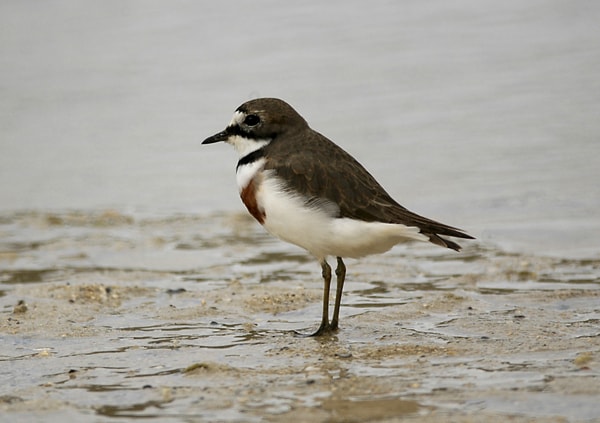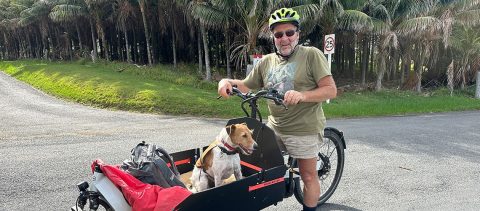The Curator‘s Blog

Here you can find snippets of news, items of interest, recent events and short articles posted by our Curator, Ian Hutton.
Subscribe to this blog and receive up-to-date notifications of new posts.
Earth Day 2025
Earthday, 2025 – An Invitation to All E-Bike Riders
On Earthday, Tuesday, 22 April, the Museum is inviting all e-bike owners on the Island to meet at Signal Point for a group e-bike photo. There will be two opportunities for those with different work schedules – 8 am and again at 3 pm.
Turn up at Signal Point with your e-bike at either of these times to be included in these photos.
Earthday, 2025 – “Our Planet Our Power”
A brief history of renewable energy efforts on Lord Howe Island
Renewable energy is vital for reducing CO2 emissions as lower emissions will mitigate global warming, the impacts of which have already been felt on the planet and on human populations around the globe. Climate change has increased the severity and frequency of storms, floods, droughts and bush fires.
In 2020, Lord Howe Island embraced renewable energy with the installation of a hybrid renewable energy system.
Up until the early 1950s, Island residents wanting electricity had to purchase their own small household generator systems. Then, in 1954, a community power supply was reticulated around Lord Howe Island using centralised diesel generators from the Department of Civil Aviation facility opposite the public hall. As demand increased, larger diesel generators were installed on the Island and run by the Lord Howe Island Board.
In 2010, a Sustainable Energy Working Group comprising six Island residents, was convened by the Lord Howe Island Board to promote renewable energy to the community. Open days were held at the public hall and residents were polled on potential sites for a small solar farm with wind turbines, and to gather community feedback.
In 2011, Powercorp was engaged to prepare a “Power Generation Roadmap” aiming for 63% “Renewable Operations” at Lord Howe Island. The Roadmap was adopted by the Lord Howe Island Board in 2012. As part of the switch to renewable energy, Island residents were invited to install their own rooftop solar, and roughly 104 kW of rooftop solar has been installed.
In 2010 canvassing of Island residents by the Sustainable Energy Working Group led to the relocation of the powerhouse from the village centre to its current site near Middle Beach.
(Also, in 2014, the Lord Howe Island Board sought funding for the project: the Federal Government’s ARENA agreed to contribute $4m (39% of the total funding); and the State Treasury offered a “loan” of $5.9m (57% of the total funding) to be repaid through savings in diesel and from existing recurrent State Government funding to the Island. The remaining $0.5 million (4% of funding) would be supplied by the Lord Howe Island Board.)
The Lord Howe Island solar farm
In 2019, The Lord Howe Island Board in partnership with Australian Renewable Energy Agency (ARENA), awarded a contract to Photon Energy Engineering Australia Pty Ltd to design, and deliver the infrastructure.
By 2021, some 3,240 ground-mounted solar panels had been installed, fixed at 20-degree angle across a north-facing slope on Transit Hill, adjoining the powerhouse and surrounded by cow pastures and native subtropical forest.
The project’s final design incorporated 1.328MW of solar energy generation capacity and 3.712MWh of battery storage.
For the local community, there is reduced potential for a future ‘diesel price shock’ and reduced maintenance costs for the diesel generators in the powerhouse, in addition to the following: our greenhouse gas emissions at the powerhouse have been cut by 66%; the burning of some 360,000 litres of diesel per year has been saved; there is the reduced the risk of fuel spills in the marine and terrestrial environment; the Island has more energy self-sufficiency; and power prices are now less dependent on world oil prices.
The solar farm has provided a clear opportunity to supply clean energy for new functions – particularly electric vehicles. In fact, the community has taken up the electric vehicle challenge with enthusiasm, and there are now 15 fully electric vehicles – cars, vans and one ute – on the Island, plus a huge increase in the number of e-bikes.
At the Lord Howe Island Museum we have a monitor that continuously displays the real-time functioning of the Island Renewable Energy system, including the amount of energy received from the sun.
Updates on the renewable energy generated by the project can be seen on the Board’s live-linked dashboard.

Art and Earth Day
To celebrate the 55th Anniversary of international Earth Day, CLIMARTE is joining with museums (including Lord Howe Island Museum) and cultural centres from all around the world in screening a collection of ecosystem-honouring films from artists from Australia, China, Malaysia, Spain, Turkiye and the United States.
In addition to ours, screenings will be held at Baltimore Woods Nature Centre (NY), CUHK Jockey Club Museum of Climate Change (Hong Kong), Havre de Grace Maritime Museum (Maryland), Morton Memorial Library Rhinecliff (NY), National Lighthouse Museum (NYC), Putnam History Museum Cold Spring (NY), Queens Botanical Garden (NYC), Thompson-Mazzarella Park (NY) and Lord Howe Island Museum (NSW).
It’s wonderful to be collaborating across so many borders and we particularly appreciate participating artist and author Selva Ozelli’s exceptional efforts in bringing it all together.
See details on this link:

Visiting summer birds
Arctic shorebirds visit Lord Howe Island
During the summer months, Lord Howe Island is visited by birds from the northern hemisphere, many of which are classified as Arctic shorebirds.
These birds breed in the Arctic regions during the northern summer, when an abundant supply of insects is available to feed their chicks. When winter arrives and food becomes scarce, these birds migrate southward to the southern hemisphere, where they find refuge on continents and islands like Lord Howe Island. They are a delight to observe as they busily feed on the island’s swamps, pastures, and beaches.
Each year, we welcome four regular visitors from the northern regions, which stay on the island from September to March.
Regular Summer Visitors
1. Bar-tailed Godwit
The bar-tailed godwit is a large, mottled grey and brown wader with a long, straight bill, which it uses to probe sandy seashores or swampy paddocks in search of food.
This bird typically inhabits grassy paddocks and sandy shorelines at low tide, often in small groups of 4-5. Its diet consists of worms, crustaceans, larvae, and insects.
Bar-tailed godwits breed in areas ranging from Scandinavia and northern Asia to Alaska.
Remarkably, some godwits that breed in Alaska have been tracked flying nonstop for 11,000 km over eight days and nights directly to New Zealand after the breeding season.
2. Pacific Golden Plover
The Pacific golden plover is a medium-sized bird with mottled brown and golden plumage and a short black bill.
Known for its short, quick steps, which are interspersed with pauses in an upright stance, this bird forages alone or in small groups on pastures and seashores, feeding on insects, mollusks, crustaceans, and plant matter.
The Pacific golden plover breeds in Alaska, Siberia, and northern Canada.
3. Ruddy Turnstone
The ruddy turnstone is a small, squat bird with mottled brown and black upperparts and white underparts. It is the most common of the summer visitors to Lord Howe Island.
These birds are often seen at the airport, turning over bits of mown grass in search of food, or on beaches and seagrass beds at low tide, where they search for worms, crustaceans, and mollusks.
Ruddy turnstones breed in the Arctic Circle, Alaska, northern Canada, Greenland, Scandinavia, and Russia.
4. Whimbrel
The whimbrel is a large summer resident with variegated light and dark brown plumage, which provides excellent camouflage. It is often heard before being seen, as it typically calls out when flying off.
A defining feature of the whimbrel is its long, down-curved bill.
It inhabits remote grassy paddocks and rocky seashores, where it is usually seen alone, feeding on seeds, insects, mollusks, worms, and crustaceans.
The whimbrel breeds in areas above the Arctic Circle.
Other shorebird Visitors
In addition to the four regulars, Lord Howe Island sees smaller numbers of other shorebirds:
Grey-tailed Tattler
Two to six birds are typically seen each year, often feeding at low tide on sandy beaches and seagrass areas such as North Beach, Old Settlement Beach, and several areas south of Johnson’s Beach.
Wandering Tattlers
Four to ten wandering tattlers visit each year. These birds prefer rocky seashores at low tide and can be seen around rocky shores such as Ned’s Beach, Middle Beach, North Reef, and Johnsons Reef, as well as along the seaweed fringes of the island and the Admiralty islets.
Pectoral Sandpipers
One to three of these birds are typically seen in most summers, usually in swampy areas such as Mosley Park Swamp.
Sharp-tailed Sandpipers
Just one to four of these may be seen on the island at any one time over summer, but more frequently in October/November and again in February/March.
Red-necked Stints
The smallest of our visiting shorebirds, red-necked stints are seen in numbers ranging from two to ten over the summer months. They are typically found feeding in the island’s seagrass areas or at Mosley Park Swamp.
Rare and Occasional Visitors
Some shorebird species are seen only briefly,
usually in October or March:
- Red Knot
- Great Knot
- Curlew Sandpiper
- Terek Sandpiper
Additionally, there are rare visitors
that may only appear every few years, including:
- Black-tailed Godwit
- Marsh Sandpiper
- Common Sandpiper
- Common Greenshank
- Sanderling
- Buff-breasted Sandpiper
- Latham’s Snipe
Regular Winter Visitors
One regular winter visitor to Lord Howe Island is the Double-banded Plover, which breeds in New Zealand during the summer months.
These plovers cross the Tasman Sea to Australia for the autumn and winter, and they are usually present on the island from February to August, with 3 to 8 birds typically observed each year.

Very Rare Visitors
Occasionally, very rare birds such as the Sanderling or the Hudsonian Godwit may be spotted on the island.
Sponsorship enables LED lights to be installed
The Museum is nearly 25 years old, and technology has moved on. The original building had the most efficient lighting of its day – fluorescent tubes throughout. In recent years LED replacement lights have become quite mainstream and the museum put a note out seeking a sponsor to replace the aging fluorescent lights with modern LED fittings.
In January 2024 two of our regular visitors and long-term supporters, James and Leonie Furber, offered to sponsor this project. The LED lights were purchased at Port Macquarie and shipped over in March, and have been installed and now are operational.
This not only gives the museum an up-to-date brighter look, but will lower the energy bill for the museum.



